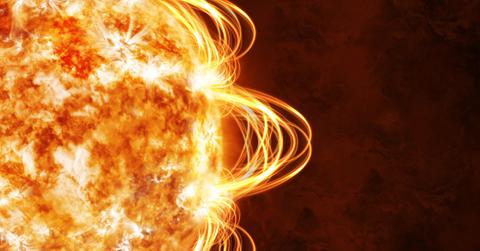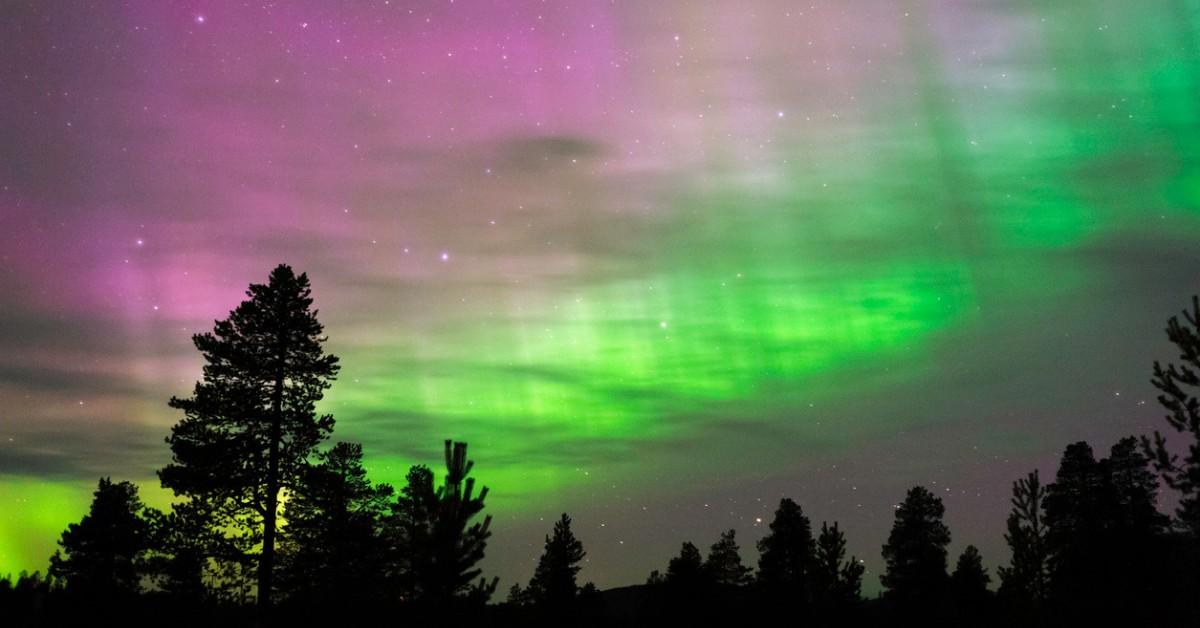X9 Solar Flare Sends Solar Storms Towards Earth, Thanks to the Biggest CME Since 2017
This is the most powerful type of solar flare the sun can produce.
Published Oct. 4 2024, 11:56 a.m. ET

October 2024 started with a bang when two massive solar flares exploded from the sun's surface, sending coronal mass ejections (CME) directly towards Earth. The solar flares — given the names X7 and X9 by scientists — are significant, with the X9 flare the strongest one to erupt from the sun in seven years.
The radiation emitted from the sun after the blasts was powerful, and it even temporarily caused a communication blackout in parts of the South Atlantic and Africa.
Learn more about the solar flares, including when the X7 and X9 CMEs are expected to collide with Earth, by reading below.

The sun's X9 CME will send solar particles raining down on Earth.
The experts at the Space Weather website say that the solar particles from the X9 CME can be expected to hit earth on Sunday, Oct. 6, 2024. The weekend arrival is likely to be a big one in the magnetosphere — which is the name of the name for the Earth's magnetic shield, according to Live Science — producing a geomagnetic storm.
Now, while that may sound scary, the view from Earth will actually be quite breathtaking for those within range of the G3 event, and it presents no danger to those in its path.
G3 is part of the rating system for geomantic storms, and it runs from G1-G5. As a G3, the expected storm surge hitting Earth will be considered "strong," but still well below the extreme effects you'd expect to see at a level G5, according to the National Oceanic and Atmospheric Administration's (NOAA) Space Weather Prediction Center (SWPC).
As such, a G3 storm can cause minor disruptions to satellites, and create problems for low-frequency radios and navigation system.
But, with those temporary disruptions will also come a beautiful display by way of an aurora borealis, which will be viable in more wide-spread areas than typically get to see these storms.
The sun's X7 CME is expected to hit Earth Oct. 4 or 5, 2024.
While slightly less strong than the X9 flare that came after it, the X7 explosion is also expected to create a plasma cloud capable of producing an aurora borealis.
Experts originally thought the storm would hit the planet on Saturday, Oct. 5 — but they have since recanted their predictions and believe that it may create a light show as early as Friday, Oct. 4.
The X9 solar flare may cause the northern lights to be visible from Oct. 3 to Oct. 5, 2024.
The experts at NOAA believe that the event will be visible over much of the northern U.S., including some southern midwest locations as well.
Of course, Mother Nature will need to cooperate in order for the folks living in those areas to get to witness the colorful storm, as cloud cover will prevent those within the path of the northern lights from actually getting to witness the display as it happens in the upper regions of the Earth's atmosphere.
To get the most up to date information about the G3 storm you can follow the NOAA and SWPC's weather alert system, where the organizations will continue to monitor the storm and update the geomagnetic storm watches that were put into place on Oct. 3.